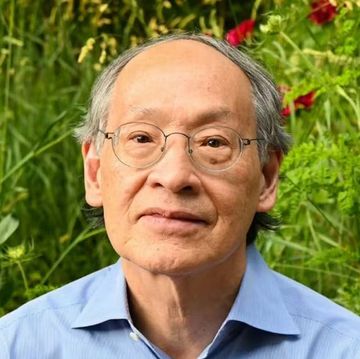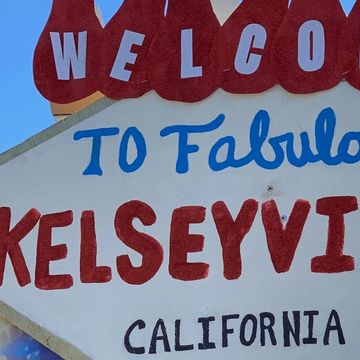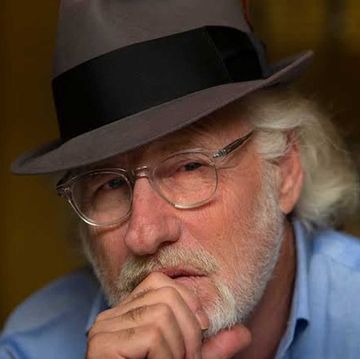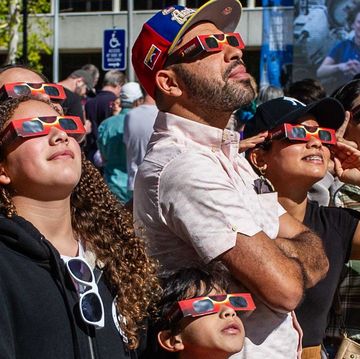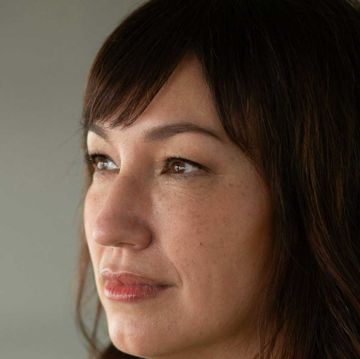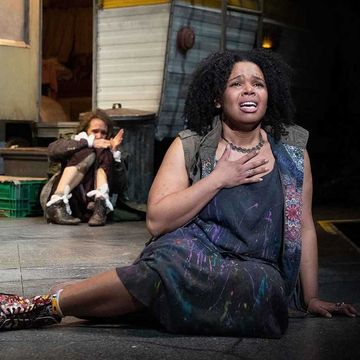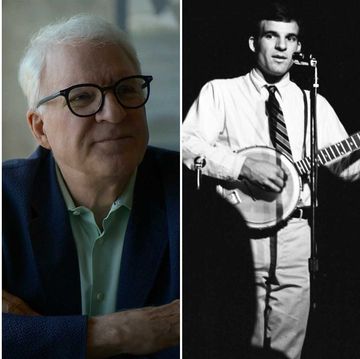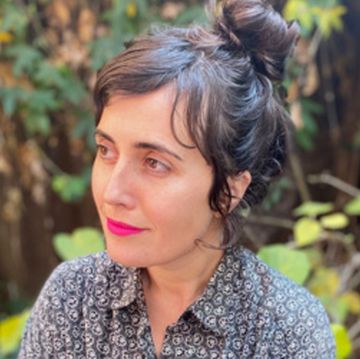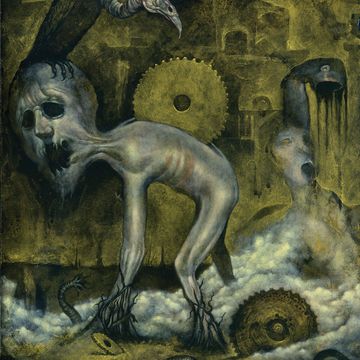Gifts—tender graces—find their way to Alison Mills Newman. That is, she has come to know, if she keeps the channels open, especially her head and heart.
Take, for instance, not so long ago, one spring day, when she logged in to her email to find that a request had come over the transom. It sent her back in time, into an old hideaway inside herself.
A New York publisher—Jeffrey Yang from New Directions—had happened on a piece about Mills Newman and her lush, memoir-ish 1974 novel, Francisco. It had impelled him to ask whether she might have a copy on hand. He’d had no luck in a search—the first (and only) edition had been published nearly 50 years earlier by Reed, Cannon & Johnson, an independent press out of Berkeley. Francisco was the inaugural title from the writers Ishmael Reed, Steve Cannon, and Joe Johnson’s collaborative concern, which was dedicated to supporting and promoting Black writers.
The “alison” of those pages was a 19-year-old West Coast multidisciplinary artist who had survived a stint in Hollywood as a child actor, breaking color barriers on the landmark prime-time TV show Julia, which starred a Black actress, Diahann Carroll, and as a regular on The Leslie Uggams Show. She was also a musician and singer, a poet in her quiet hours.
This article appears in Issue 27 of Alta Journal.
SUBSCRIBE
By the early ’70s, she’d fled Hollywood—and its predatory casting-couch practices—for New York, boomeranged back to L.A., then north to the Bay Area, where she fell in with a collection of Black artists, intellectuals, and rebels, riding the current of the Black Power and Black Arts movements. In this whirl of ideas was also where she met the titular Francisco Toscano Newman, a politically incisive independent filmmaker and dreamer and the man who would become the love of her life.
The “Alison” who sat absorbing Yang’s email inquiry is now in her 70s and has traveled through many more vibrant scenarios and nested versions of herself.
She gathered herself—those selves—and tapped an email back saying she would send him a copy. She xeroxed the slim volume she’d pulled from a shelf, placed the stack of pages in an envelope, and launched it to New York City.
It had been years, decades, since she’d read the book. Really sat with it. She skimmed the first pages and paused. Did she want to sink back into those old landscapes?
Her days were full of pressing tasks and future planning. This Alison has continued to blossom—new territories, new friends, new devotions. Living in Georgia, she is an ordained minister and the CEO of Keep the Faith Film Ministries as well as a chaplain at the Fulton County Jail. She enthuses over her five adult children—her devoted “canvases”—and 10 grandchildren.
When Yang wrote back and then phoned, with more specific plans for bringing out a new edition, she was conflicted: This slender souvenir of her California bohemian days was, certainly, a significant chapter in her life. But as time, and she, had moved on, that swirl in the spotlight had dimmed. She wondered: “Does anyone remember me?”
She would have to pray on it.
Francisco is its own atmosphere. Dreamy, earthy, and openhearted, the rush of the book is a tide tumbling in. Best to simply leap in, give yourself over to it—its seductive cadences, its sly, offhanded turns of phrase. There is a distinct music that lives under Mills Newman’s sentences and a rhythm and voice that linger long after you close the cover.
i started thinkin about one time when i was in s.f. in francisco’s kitchen with windows that looked out on the backsteps of apartment houses…and the sky kept shiftin from grey to bright sunned blue. anotha morning tryin to make up its mind.
Part lyric vernacular and part stream-of-consciousness testimony, the book, in the whispered hush of lowercase, details the protagonist’s kaleidoscopic journey traveling the length of California, touching down briefly in New York. The novel is peopled with Black artists and tastemakers who stretch the hours of the days talking politics, philosophizing, making art, and charging and changing territory. Those artists and trailblazers who were part of Mills Newman’s real-life fold helped nurture and shape her. That 19-year-old alison is wholly alive in her mind, her body, the seeds of inspiration everywhere.
there was a piano, candles and i could play the piano late at night—there were lots of books, books on everything african, pictures of egyptian monuments, figures and fleas.
Francisco is the sort of book that you want to eagerly press into someone’s hands; a book where you might feel heard and seen; a book that wakes you up. It’s a book I wish I had had in my back pocket decades ago: a genre-resisting exploration, shadowing a Black woman not just finding but defining her way as an artist.
For years, though, hard to find—people in the know referenced it as one of the essential reads from the Black Arts movement, glimpsed through a woman’s lens. It was a passcode. A “lost classic” of the era.
What’s clear about the journey of Francisco—the story that lives on the page and off of it—is that California shaped its author. Here, landscape is both a crucible and a touchstone.
This year, 2024, marks the novel’s 50th anniversary, and Mills Newman is still reckoning, freshly, with the pages that feel written by someone else.
Mills Newman now lives in Atlanta in a trilevel condo with white wooden floors and cool blue walls, full of art and light. We’d been hoping to meet up in person, on the West Coast, walk her old pathways, but with the fast-approaching holidays, we decide on a series of telephone chats with me calling from one of her former backdrops—Los Angeles. In short time, our back-and-forths begin to feel more like reunions than an interview. I see and feel the California she inhabited, almost as if the car or café seat from which she viewed it were still warm. Over the course of a month, we sink into looping, hours-long conversations, summoning old vistas. I’m hungry to know more about place—the locations that have inspired her, that have shaped her art, and most especially the communities that have buoyed her. Her life has been full—alight with opportunity and dimmed by heart-wrenching switchbacks. She has pressed forward, adapting and renewing. Leaning into her faith.
Alison Susan Mills was born on Long Island, but that native place is now a distant pin on her memory map. “My parents moved to Los Angeles when I was about three years old, maybe 1955, 1954,” she recalls. Her father, a chemist, was hired by Douglas Aircraft Company. A plumb position and location for a Black man in that era. “We were one of the lucky ones. My parents never let us forget it.” The family—Mills, her two siblings, and their parents—crossed the country by car, her father behind the wheel. “We would drive into certain cities [and then] drive right out because they didn’t accommodate people of color,” she remembers. But along the journey, she also recalls, amid the bleakness, there was benevolence. “Black people, directing my parents to a certain house, down the road somewhere. They took you in, and they fed you biscuits and gravy. It was like that underground railroad,” she muses. “And I suppose, to some degree, it still exists, right? Or an understanding of a safe place among ourselves.”
The Los Angeles that the Mills family settled in was not much better. It wasn’t, as touted, the Great Migration Eden. Rather, the region revealed itself as a network of whispered codes and constraints—restrictive housing covenants and sundown towns.
After a six-month search, the Mills family purchased their own home on West 28th Street near Arlington Avenue—an area now known as Jefferson Park. “It was a beautiful neighborhood, mixed, well taken care of, like any other neighborhood. You know, just humans,” Mills Newman says. People who got up every morning and went to work, people of color, just like her family, who had to jockey for their own slice of opportunity.
With time, she crossed the dividing lines and began to assemble her own sense of the city. She was pulled, not so much to a particular neighborhood but to experiences: “I was called to the ocean; I was called to the museum. The libraries. I was called to environments. Places kind of spoke to me.”
By grade school, a hungry reader and faithful writer, she felt most comfortable in her solitude, her very solitariness. Finding her safe places within herself. “I was called to my own room. My own privacy…my own isolation,” she says. Poetry was a place to retreat into: “I’d find a piece of paper and write.” Yet, even more, the language of theater enchanted her, and after a while, as a preteen, with her parents’ permission, she joined a Black theater workshop her mother had researched, the American Theatre of Being, directed and guided by actor Frank Silvera.
They gathered on Robertson Boulevard, and Mills studied alongside a group of working actors including Beah Richards, Maya Angelou, Yaphet Kotto, and later Nichelle Nichols, who were making a space for themselves, starving artists, in roles and scenarios that gave them more substance and latitude. The theater would stage and shape James Baldwin’s first play, The Amen Corner, before its successful Broadway run in 1965; young Mills would serve as an understudy for the original production.
After her TV debut on Mr. Novak, a 1963 series starring James Franciscus as an L.A. high school teacher, and an appearance on The John Forsythe Show, at 17 she stepped into history as Carol Deering, a babysitter, on Julia. While it was the first prime-time series to star a Black actress in a nonstereotypical role, it also positioned Mills as the first Black teen actress in a similar recurring role. The show would change the trajectory of her life. But it—and life in television—would also try her soul. Forced to cover her long, curly natural hair with wigs, propositioned and belittled by producers, after about seven years in TV, she knew the ordeal had run its course.
i ran up the hill to the living room in my house and stared out over the hills looking through the sliding glass windows and saw marilyn monroe and dorothy dandridge
Dying.…
i called my agent at caa and said i was leaving for new york
are you in love? he asked
no, i weeped. if i stay in hollywood i’m gonna die, i said hysterically…i’m gonna die.
Jagged, she lands in New York City, which allows her to shift perspectives and drink in a different place’s energy. But something else comes to pass for Mills, another moment of grace.
Living in an apartment building at East 77th Street and Lexington Avenue, she was basking in an anonymity that felt like freedom. She’d been swanning around the city, rooming with a friend, a Swedish model who had recently landed on the cover of Vogue. One day, in the lobby, Mills felt a set of eyes fixate on her: “This Black beautiful woman stops me and says, ‘I’ve been watching you, and I know who you are. And all you do is hang out with white people, and that’s OK. But you need to hang out with some Black people for your soul.’ ”
The woman’s words pricked, but she wasn’t wrong: “I’m 19.… And my whole world at the time was white.” It was like an ice bath of clarity. She was in a new place, but swimming in a similar Hollywood cosmos. “So I listened. I heard her and I understood,” she reflects. “Through this Black lady standing in the lobby, I was placed on another path.”
She made a quick inventory: Who do I know here? Canvassing her network, she sent out a line to actors Dick Anthony Williams and his wife, Gloria Edwards, who were starring in a Broadway play, Ain’t Supposed to Die a Natural Death. They, in turn, introduced her to the poet David Henderson, cofounder of the Black Arts movement, who, in short time—with collaboration in mind—spirited her to SoHo, to meet with jazz musician Ornette Coleman.
Sitting in the velvet blue of dark music lounges, hearing words echo from a theater stage and watching actors transform them—and themselves—she felt Hollywood begin to fade in the rearview: “I spent some time there doing plays with Amiri Baraka and other artists,” she recalls. She opened for Coleman, as a singer, at the Five Spot. Kitchen-table talks and intimate parties, late-night dancing, all of it energized her. “There was that return to what I experienced in Frank Silvera’s workshop. All these amazing Black artists—and artists who were not Black—that embraced everybody’s humanity.”
Replenished, she returned home to California. Stopping briefly in L.A., free of Hollywood’s expectations, she reached out to people she knew would better understand the place, inside, where she’d arrived. One figure she leaned on was Henderson, who lived on both coasts. “I shared with him about how…I was detaching myself, in my head, from acting because of the hurtful experiences. He [had] embraced my art and my music,” she recalls. “I told him that I wanted to try to reattach myself to that.”
Henderson proffered an invitation to Berkeley: “A little cabin, [behind] a main house. I was totally enchanted with it. Quite quaint and beautiful and artistic and lovely. I had never been to Berkeley. I was amazed.”
In a word, she bloomed: “The way I looked physically. The way I dressed myself. The way I expressed myself artistically. My heart was so connected directly to the Berkeley spirit in the time and how everyone—white, Black, and Asian people—were all experiencing each other with love and acceptance of our differences.… I was enjoying the liberty of having no agenda other than loving art…loving each other and learning from each other. If there was any ambition, it was to figure out what life is all about.… I was doing research on myself.”
Francisco, with its rolling flow of characters, language, and backdrops, is a road novel of a different sort. A picaresque journey described in the voice of a Black woman embracing her sexuality and thirst for experiences, knowledge, and sensation.
The small graces, the open channels, that Mills had begun to listen for are what led her to Francisco Newman, the filmmaker she encountered at one of those Berkeley dinner parties. Evenings that were deep and expansive, with sparks of revolution in the air. They connected, head and heart.
he walked through that door with such vigor and perseverance and life, man.
She was also reconnecting to her other modes of expression. Her music, her own writing. Once she and Newman synced and began wandering up and down the coast, she became an accomplice, an ally, supporting his dreams and connecting him to her own California creative network.
Though some readers have posited that the alison of the novel puts herself and her dreams aside for those of Francisco, Mills Newman wants to be clear. “I was never idle,” she says. “It was a different creative mode. Here was this beautiful soul, Francisco, working on his film, fighting for it, also having escaped Hollywood.… I was there as his support…to let him know that I believed in him and to surround him with other people that believed in him.”
There is an urgent, heart-in-throat feeling to Francisco. The ecstasy extends not just to the pair’s coupling but to the alertness of alison. As I read, I envisioned notebooks sitting open on the seat of a car; quick notes made on a napkin, penciled in the last pages of a worn paperback: an aggregation of moods, ideas, and declarations.
Mills Newman tells me that, for the most part, this mirrors how the book announced itself to her. She hadn’t set out to write a novel. It was something whispering to her, “a faraway melody that I could hear in the distance.”
i looked out through the slidin glass door windows to take in the streaks of passin sun light easin in through the leaves of all the trees rockin back and forth in a slow lilt to the evenin’ wind comin on, and the light hazel blue eyes sausalito had for a sky.
Ultimately, the loose pages that made up Francisco, those handwritten notes, observations, and asides, were resting on the kitchen table when Ishmael Reed fell by to chat with Newman. Mills had wandered out of the room for a moment—she doesn’t fully recall what she’d been called to tend to. When she returned, Reed was sifting through the pages.
At first, she says, “I was like, ‘Wait! You read that?’ But then the…excitement he had toward the pages obliterated my self-consciousness. I quickly opened up to his going ons about how he thought it was very well worthy to be published.”
Reed, who makes an appearance as “editor” in the book, was struck by its voice. “Francisco is a pioneer work, honest and direct without ornament,” he says. “It is a rare book about a bicoastal Black avant-garde of painters, writers, and musicians, faithful to the avant-garde’s language and rebellion against Black bourgeois convention.”
Mills’s portrait of the Black Arts movement also casts a vital light on the West Coast. “When I was 20, I came to San Francisco—1958,” says Reed. “Bob Kaufman and…Chester Himes were Black creative writers [there]. The novel shows that one doesn’t have to go to Paris or Rome to connect with innovators in the arts.” For Mills, Reed, and others like them, California became a location of inspiration.
Reed was captivated by Mills’s writing. “I asked Steve Cannon and Joe Johnson for $750. So with my $750, we published a first-rate book with a local printer,” says Reed of the press’s debut title. Two thousand copies. Paperback, with a simple cover featuring an alluring photo-booth snapshot of the couple and blurbs from Toni Morrison and William Demby, it sold out within a year on the power of word of mouth.
In retrospect, says Mills Newman, “I don’t know that I understood that it was ‘success.’ The gift of this book touched my heart more in terms of being really, really who I was.”
Stitched into Francisco’s narrative, though, is a cautionary Hollywood tale. Reed had initially met Newman in the early 1970s, when Reed was courting film producers for an adaptation of his novel Yellow Back Radio Broke-Down. Musician and producer Quincy Jones showed interest, and later, the comedian Richard Pryor. Mills’s novel examines, in part, a pivotal turnabout, a “betrayal,” says Reed, after he’d sold Newman the film option. “Francisco thought that he had a deal with Pryor, who said he wanted to film Yellow Back. Instead, Pryor took the idea to the producers of Blazing Saddles.”
Film history made, but to Newman’s devastation.
Alison and Francisco’s story continues beyond the edges of the book. In the novel’s final pages, there comes a fracture of sorts, an estrangement that parallels real-life events. Outside the novel, however, four years later, they return to one another, recommit, and marry.
During their time apart, Mills found a deep sense of faith, attempting a path toward peace. “I gave my life to Christ,” she says. She prayed and fasted. She turned her creative attention to music, put together her own band, traveled, sang, signed a deal with A&M Records, worked with artists Herb Alpert, Billy Preston, Andraé Crouch, Taj Mahal, and Wayne Shorter, among others.
Alison and Francisco’s reunion would produce a family; collaborative film work; a ministry in South Central and beyond, through which they worked with gang-affected youth, mounting plays, trying to steer them toward envisioning another path.
Deep in this purpose, time moved fast. When her youngest child headed off to college in the early 2000s, Mills Newman was struck by a wearying case of empty-nest syndrome. That’s when she took to an internet forum, sending out a virtual message in a bottle: “I used to be Alison Mills. Does anyone remember me?”
That’s where, with a few keystrokes, Harryette Mullen found her—Mullen, the UCLA professor and poet whose 2004 Callaloo essay Jeffrey Yang would read years later.
Mullen had happened on a copy of Francisco in the early 1980s, when she was on a tour for her own book, Tree Tall Woman. One of the events was held at a Berkeley Unitarian church, where she met Reed. “He probably brought the books for sale,” she says. She recalls being pulled in by the novel’s cover, “with its portrait of Alison and Francisco, hinting at a contemporary Black love story, a rarity for literary fiction published in the 1970s.”
Twenty years passed before she happened into Mills Newman online: “Once Alison and I realized we were all in Los Angeles, we agreed right away to get together. For me, it was intriguing to meet two people that, in a way, I felt I’d met years before as characters in Alison’s novel.” That freewheeling couple from the book now had five children, a rambling Craftsman home.
“Harryette was the person who reactivated interest in this forgotten book,” says Mills Newman. “I speak very highly with heartfelt gratitude of her. Always.”
Francisco, however, did not get to witness this resurgent moment; he died in 2003. “You know, I want to be painfully honest,” says Mills Newman. “He didn’t get…to live to see a lot of his dreams fulfilled. He did have a powerful ministry. He was a wonderful husband. And a wonderful father.… And he was famous to God.”
A week before Christmas, Mills Newman is reminiscing and conjuring place for me—specifically, Los Angeles: the hiss and hum of rush hour on Crenshaw Boulevard and the old hot spot Maverick Flats, where she and her Leslie Uggams Show cohort would dance into the night; Dorsey High School, which she attended; and then Leimert Park, where the venerable African drum circle gathered for hours. “My husband and I, we shot a scene from [our film] Virgin Again in that park. I remember, I think it was blossoming there, with little cafés, poetry readings.… Is all that still there?”
Some yes, some not, I tell her.
“Even my parents’ old neighborhood…I wonder what’s happened to it. If it’s gentrified?” Something they fought so hard for, to live in, to thrive in.
“What I love about where I live is that with this gentrification—like you all are fighting in L.A.—our Black community is keeping a balance here…fighting,” she says.
In our winding conversations, I begin to realize that my early wish to walk with her in person through her pasts—Berkeley, North Beach, southwest L.A., what’s left of the funky ocean-facing communities up and down the California coast—was perhaps misguided. Maybe remembering it as it was, and not as it is, serves as the best backdrop. Hers is not a story of lament; it’s a story of celebration, of possibility. It’s a framework for future work.
While it’s true that gentrification has fractured, if not wholly remade, these communities, these were also the havens—that “safe place among ourselves”—that Mills Newman needed when she was gaining her sense of self. These spaces need to be honored and supported. They provided hope and succor when people like Alison and Francisco needed it most. This is what Francisco so vividly celebrates.
Trading “the ocean for the trees,” she’s found comfort in her community in Atlanta, where she runs her ministry and participates in gallery showings of her artwork and readings, and where her family flourishes. She’s writing, often daily, but expresses frustrations with the pace at which victories happen. “I recently gained an agent,” she tells me. “Recently,” she repeats, with a shade of bewilderment. Why, she wonders, can’t a more disparate array of Black stories be honored? “There are all kinds of varieties and diversity of voices that are meant to be heard,” she says. “I would send things out, and people would say, ‘It’s beautiful.’ ‘The writing is beautiful.’ ‘Your voice is beautiful. But it’s not for us. Not for us.’ ”
Nevertheless, the page remains a place of solace and hope. Her most recent book, a novel, Maggie 3, was published by Reed in 2007. And she’s at work on what, she says, looks to be a memoir.
When Yang came calling in 2021, shaking loose the past, she wanted to think through the opportunity carefully. “It wasn’t that I resisted it,” she recalls, but she had to step back, and into prayer: “ ‘God, do you want me to do this?’ I just didn’t know.” She knew that she had to “find peace about it.”
She read her novel, in full, for the first time since 1974. “It’s not factoring into my brain that I wrote this book,” says Mills Newman. The rawness stopped her, had her grabbing for her editing pen, but, ultimately, she realized, the text was true to the moment—a season in her life. What it came down to was that she wanted to honor that younger self, “the one who saved me.”
The New Directions edition of Francisco was published in March 2023, and with it, Mills Newman sought to reconcile herself with that young woman who walked away from Hollywood’s version of success. Whatever comes next in her story is a continuation of—not a break from—her past: “That is who I was. That soulful root.”
She reaches to music for a metaphor: “You have all these different melodies and staccatos. Stops and starts, with the same song. They are moments…a different chord, but the same song, you know. Like I’ve told the editors, ‘I am hoping and praying that they will accept me, the 72-ish me, too.’ ”•
Lynell George is an award-winning Los Angeles–based journalist and essayist. She has been a staff writer for both L.A. Weekly and the Los Angeles Times. Her work has appeared in various news outlets including the New York Times; Smithsonian; Vibe; Boom: A Journal of California Preservation; Sierra; Essence; and Ms. She was selected to be a University of Southern California Annenberg/Getty Arts Journalism fellow in 2013 and received the Huntington Library’s Alan Jutzi Fellowship for her studies of California writer Octavia E. Butler in 2017. She is the recipient of a 2017 Grammy Award for her liner notes for Otis Redding Live at the Whisky A Go Go. George is the author of three books of nonfiction: No Crystal Stair: African Americans in the City of Angels (Verso/Doubleday); After/Image: Los Angeles Outside the Frame (Angel City Press); and her most recent book, A Handful of Earth, A Handful of Sky: The World of Octavia E. Butler (Angel City Press), published in 2020, which was a Hugo Award finalist in the Best Related Work category in 2021.









